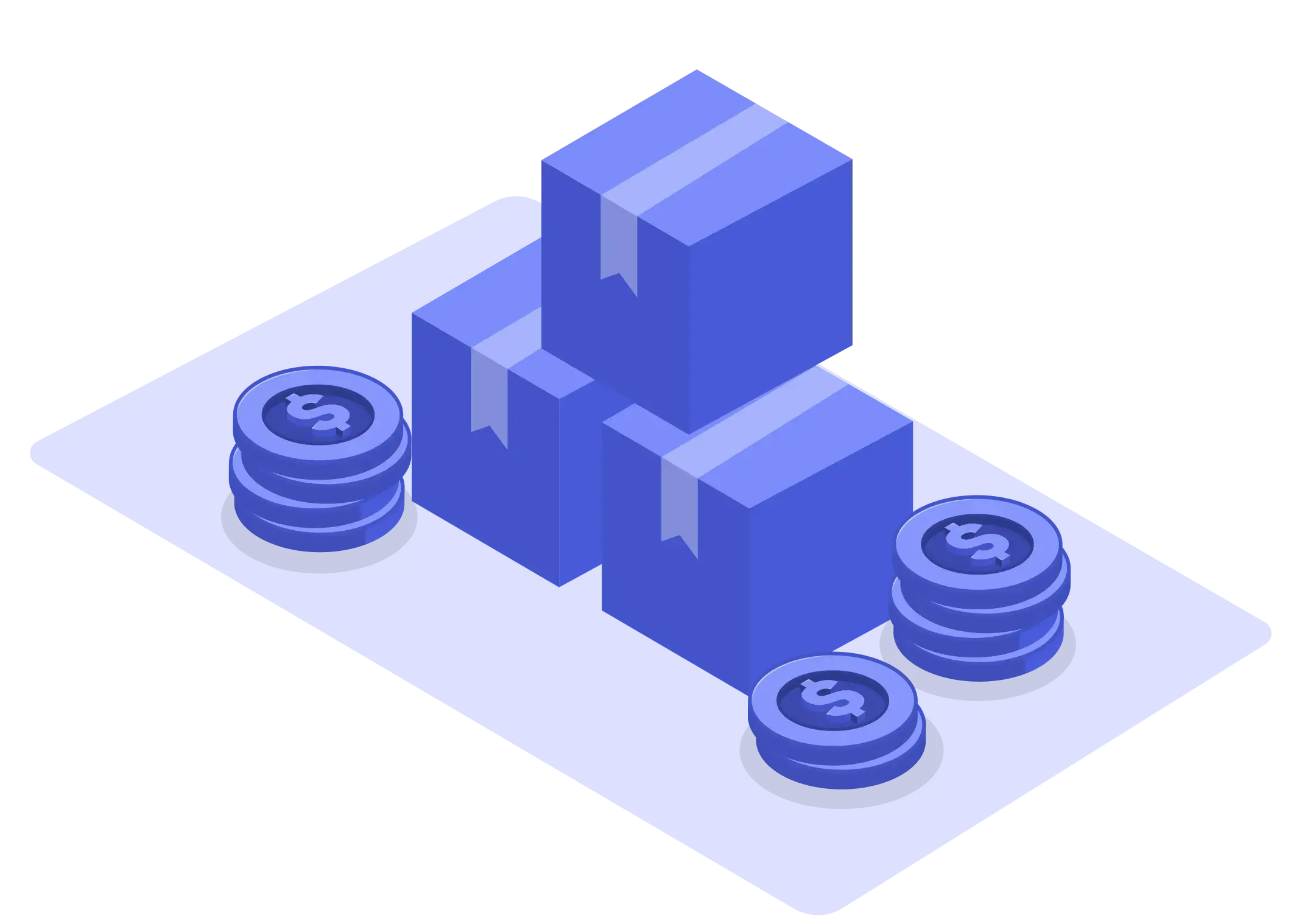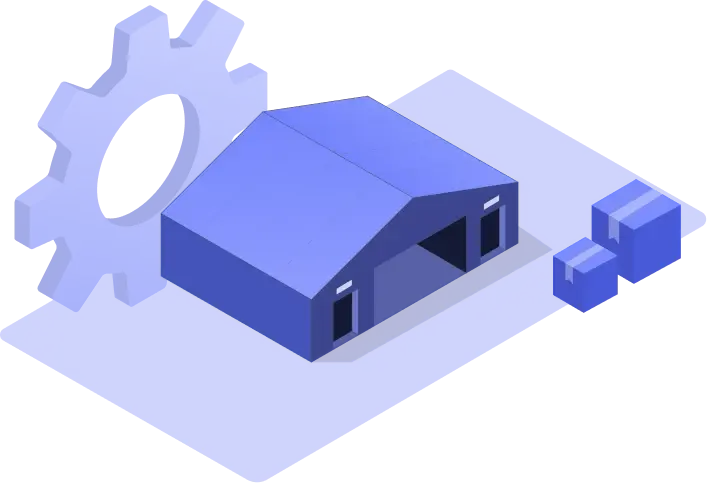Modern vs Traditional ERP Systems: Supply Chain Logistics Comparison

Table of Contents
Enterprise Resource Planning systems are the crux of modern business operations, specifically in supply chain and logistics. Modern businesses use these digital solutions to bring efficiency in processes as diverse as inventory management and warehouse operations to order fulfillment and transportation. According to a survey, as many as 49% of companies have improved all their business processes due to ERP implementation.
However, despite harnessing a handful of ERP systems, businesses struggle with old, dated technology in an increasingly digital age. While traditional systems shackle businesses, their competitors push ahead with cloud-based ERPs that are both agile and functionally better.
Imagine the contrast: a modern ERP, flexible and fully integrated with operations, versus a traditional system, siloed and disconnected across the industry. A modern ERP offers an intuitive, mobile-friendly dashboard, while a traditional system forces users through a convoluted interface on a rigid system. With a modern ERP, business reports are available in real-time, driving instant decisions, whereas traditional systems can take a week just to deliver basic insights. In this article, the most prominent differences between the modern ERPs and traditional systems will be identified, and how contemporary solutions redefine operational excellence in logistics and inventory management.
Why traditional ERP Systems Are Failing Modern Supply Chains
Traditional ERP systems, once the vanguard of business operations, are now definitively outdated. These systems, some dating back to the 1990s or early 2000s, come with a host of limitations:
Inflexibility and Lack of Scalability
Traditional ERP systems like SAP R/3 or earlier versions of Oracle E-Business Suite were designed for a more stable business environment. They operate on the assumption that business processes remain relatively constant. Modern supply chainsare constantly in flux, so these systems often struggle to adapt.
For instance, a warehouse using an older version of a WMS might find it challenging to implement new picking methods like wave picking or zone picking without significant customization. As order volumes fluctuate dramatically during peak seasons or unexpected events (like the recent global pandemic), these traditional systems often buckle under pressure. In such cases, turning to modern ERP systems can be a blessing.
In fact, a logistics provider that switched from a traditional ERP to Omniful's modern operations excellence solution saw a 75% reduction in order processing times! Leveraging Omniful's like automating wave picking, automatic picker assignment, going paperless, automatic shipping courier selection, and real-time inventory tracking helped the company achieve this feat.
Traditional ERP Integration Challenges In Modern Logistics
Traditional ERPs are notorious for creating data silos. Simply put, this means your WMS, TMS, or order management systems may be working independently and are not connected. As a result, there is no exchange of data or information. Managers or decision-makers must manually look through several Excel reports and sheets to get relevant information.
For example, systems like IBM's AS400-based ERP solutions or Infor's older offerings often struggle to communicate effectively with modern cloud-based services or IoT devices crucial for real-time inventory tracking.
Imagine a distribution center trying to integrate a traditional ERP with a modern automated storage and retrieval system (AS/RS). The lack of standardized APIs and real-time data exchange capabilities in the traditional system can lead to inventory discrepancies. This may, in turn, lead to delayed order processing, and missed optimization opportunities.
User Experience
Using a traditional ERP can feel like navigating a labyrinth. Systems like older versions of Microsoft Dynamics NAV or Sage 100 often have complex, text-heavy interfaces. These decrease productivity and increase the likelihood of errors. These cumbersome interfaces can lead to significant inefficiencies for a logistics manager trying to optimize routes or a warehouse supervisor managing pick lists.
Additionally, new employees in supply chain roles face a steep learning curve with these old systems. It's not uncommon for companies to spend weeks training staff just to navigate basic functions in traditonal warehouse management (WMS) or transportation management (TMS) modules.
Limited Mobile Access
Thanks to volatile markets, which are constantly in flux, many traditional ERP systems fail when it comes to real-time visibility. Systems like older versions of JDA (now Blue Yonder) or older WMS systems often lack robust mobile applications or web-based interfaces. This limitation is particularly problematic in logistics and warehouse management, where floor staff need immediate access to inventory data or shipping information.
For instance, a floor manager using a traditional system might need to return to a terminal to update inventory levels or check order status, wasting valuable time and potentially leading to errors in stock counts or shipment tracking.
High Maintenance Costs
Maintaining traditional ERPs is expensive, particularly in the fast-moving world of supply chain management. Companies using systems like Baan (now part of Infor) or older versions of Epicor often find themselves trapped in a cycle of costly upgrades and customizations.
These systems frequently require specialized knowledge to maintain, necessitating dedicated IT staff or expensive consultants. For a mid-sized or small logistics company, this can mean spending thousands of dollars annually just to keep the system operational.
How Modern ERP Systems Improve Supply Chain Efficiency and Scalability
While many companies still use traditional systems, modern, interconnected ERP systems are now taking over. Modern ERP solutions represent a paradigm shift in supply chain and logistics management. They address the shortcomings of traditional systems head-on while opening new avenues for efficiency, insight, and growth. Modern ERP systems bring many advantages to companies:
Cloud-Based ERP Architecture: Key to Flexibility and Scalability in Logistics
Contemporary ERPs leverage cloud technology, offering unparalleled scalability and flexibility. In fact, cloud-based ERP systems experienced a robust growth rate of 21%, reflecting its relevance today. As demand fluctuates unpredictably in volatile supply chain markets, cloud-based systems offer the agility to adapt quickly.
For instance, during peak seasons, a cloud-based WMS can automatically allocate more processing power to handle increased order volumes without any manual intervention. This elasticity ensures that operations run smoothly regardless of demand fluctuations.
Seamless Integration: Breaking Down Data Silos
Modern ERPs excel at integrations. They unify data across all business processes and easily integrate with third-party applications, IoT devices, and even AI-powered analytics tools.
In practice, this means a warehouse using a modern ERP can seamlessly connect its inventory management system with automated guided vehicles (AGVs), pick-to-light systems, and even predictive maintenance tools for conveyor belts. This level of integration provides a real-time, panoramic view of operations, enabling proactive decision-making and smoother workflows.
Enhanced User Experience and Mobile Accessibility
Gone are the days of clunky interfaces and desk-bound access. Modern ERPs boast intuitive designs to boost productivity and reduce training time. For example, a warehouse worker using a modern system can easily view optimized pick routes on a mobile device, update inventory in real-time, and even receive AI-powered suggestions for task prioritization.
The mobile-first approach of modern ERPs is particularly valuable in logistics. Drivers can access real-time route optimizations, warehouse managers can oversee operations from anywhere in the facility, and executives can make data-driven decisions on the go.
Advanced Analytics and Automated Workflows
Data-driven insights are the lifeblood of modern supply chain management, and contemporary ERPs deliver them in spades. They offer comprehensive analytics tools for deep business insights. Several systems also offer AI-powered predictive capabilities to anticipate trends and challenges.
For example, a modern ERP might use machine learning algorithms to predict stock-outs based on historical data, current orders, and even external factors like weather patterns or social media trends. This foresight enables proactive inventory management and more efficient resource allocation.
Automation is another key feature of modern ERPs. Automated workflows, which can be customized according to business needs, directly increase efficiency and reduce manual errors. Modern ERPs can automate everything from order processing and inventory updates to route optimization and shipment tracking, freeing up staff to focus on strategic tasks and customer service.
Traditional ERP Systems Vs. Modern ERP Systems
| Aspect | Traditional ERP Solutions | Modern ERP Solutions |
|---|---|---|
| Operational Agility | Rigid processes, slow to adapt | Dynamic workflows, rapid reconfiguration |
| Data Accessibility | Siloed information, limited visibility | Unified data ecosystem, real-time insights |
| Supply Chain Visibility | Fragmented view of operations | End-to-end transparency across the chain |
| Inventory Management | Periodic updates, potential inaccuracies | Real-time tracking, predictive stock management |
| Order Fulfillment | Manual intervention often required | Automated, optimized order processing |
| Warehouse Efficiency | Basic WMS functionality | AI-driven space utilization and picking strategies |
| Transportation Optimization | Static routing, limited real-time adjustments | Dynamic routing with real-time traffic and demand inputs |
| Vendor Collaboration | Limited communication channels | Integrated supplier portals, collaborative forecasting |
| Customer Experience | Reactive service model | Proactive, personalized customer engagement |
| Reporting Capabilities | Pre-defined, static reports | Customizable dashboards, ad-hoc analytics |
| Scalability | Hardware-dependent, challenging to scale | Cloud-based, elastic scalability on-demand |
| IoT Integration | Limited or no IoT capabilities | Seamless integration with IoT devices and sensors |
| Artificial Intelligence | Minimal AI integration | AI-powered insights and decision support |
| Mobile Accessibility | Desktop-centric interface | Full mobile functionality for on-the-go management |
| Compliance Management | Manual updates, with the potential for errors | Automated compliance checks and updates |
How Long Does It Take to Switch to a New ERP Software?
Transitioning to a new ERP system is a serious step, but it can make your organization's business processes more efficient. The amount of time it will take to implement a new system may vary, based on the following conditions:
-
Company size and complexity: Larger companies that manage more complex operations might need 6 to 12 months or even more at times, while a smaller business can expect the transition to be made in 3 to 6 months.
-
Scope of implementation: Implementing the whole system throughout the company is more time-consuming than deploying particular modules or implementing the system apparently in multiple phases.
-
Data migration: The volumes of data to be migrated and their quality may strongly affect the process.
-
Customization: Any additional development will require more time for the implementation to be completed.
-
User training: Although developing detailed training programs is important, doing it may have an impact on the overall timeline of the implementation.
-
Change management: It may be an important aspect that can affect the transition time.
While traditional ERP implementations often stretched over years, modern cloud-based solutions have dramatically reduced these timelines. With the right partner and a well-planned strategy, businesses can now expect to see initial results within months rather than years.
Switch to Omniful --- A Modern ERP for Operational Excellence in Retail, Commerce, & Logistics
The transition to a modern ERP system might seem daunting, but it's more accessible than ever for businesses of all sizes. One platform exemplifying the advantages of a modern ERP system is Omniful's AI-driven ERP solution.
Omniful's comprehensive suite encompasses order management, warehouse operations, transportation, point of sale, shipping, inventory management, returns, and end-to-end supply chain oversight. This holistic approach ensures all aspects of your operation work in harmony, driven by real-time data and AI-powered insights.
Whether you're a burgeoning e-commerce startup or an established logistics provider looking to stay ahead of the curve, Omniful's solutions can be tailored to meet your specific needs while providing a clear path for future growth and innovation.
Don't let outdated systems hold your business back. Embrace the future of ERP with Omniful and position your company at the forefront of operational excellence. Contact us today for a demo and discover how quickly you can transform your business with a truly modern ERP solution.
























